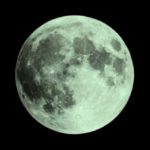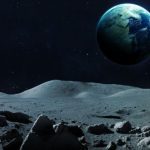 Weird Stuff
Weird Stuff  Weird Stuff
Weird Stuff  Our World
Our World 10 Ways Your Christmas Tree Is More Lit Than You Think
 Movies and TV
Movies and TV The 10 Coolest Stars to Set Sail on The Love Boat
 History
History 10 Things You Didn’t Know About the American National Anthem
 Technology
Technology Top 10 Everyday Tech Buzzwords That Hide a Darker Past
 Humans
Humans 10 Everyday Human Behaviors That Are Actually Survival Instincts
 Animals
Animals 10 Animals That Humiliated and Harmed Historical Leaders
 History
History 10 Most Influential Protests in Modern History
 Creepy
Creepy 10 More Representations of Death from Myth, Legend, and Folktale
 Technology
Technology 10 Scientific Breakthroughs of 2025 That’ll Change Everything
 Weird Stuff
Weird Stuff Ten Bizarre Facts About The Doge Meme
 Our World
Our World 10 Ways Your Christmas Tree Is More Lit Than You Think
 Movies and TV
Movies and TV The 10 Coolest Stars to Set Sail on The Love Boat
Who's Behind Listverse?

Jamie Frater
Head Editor
Jamie founded Listverse due to an insatiable desire to share fascinating, obscure, and bizarre facts. He has been a guest speaker on numerous national radio and television stations and is a five time published author.
More About Us History
History 10 Things You Didn’t Know About the American National Anthem
 Technology
Technology Top 10 Everyday Tech Buzzwords That Hide a Darker Past
 Humans
Humans 10 Everyday Human Behaviors That Are Actually Survival Instincts
 Animals
Animals 10 Animals That Humiliated and Harmed Historical Leaders
 History
History 10 Most Influential Protests in Modern History
 Creepy
Creepy 10 More Representations of Death from Myth, Legend, and Folktale
 Technology
Technology 10 Scientific Breakthroughs of 2025 That’ll Change Everything
10 Crazy Ideas About Our Solar System
Crazy space ideas are the most interesting, and I don’t mean the unfounded inklings that space-reptiles helped levitate the stones at Angkor Wat, or that giant cat-headed spacefarers built the pyramids as huge scratching posts.
Nope, the following craziness is based on bona fide science from people and computers that actually do science for a living. And that makes it way better, because the cosmos is exponentially more creative.
Related: Top 10 Frightening Facts About Our Solar System
10 Pluto May Have an Ocean
Many moons in our solar system have hidden oceans, but what about a dwarf planet!? First, some frigid facts: Pluto’s gigantic orbit takes 248 years to complete, meaning that none of us would ever get to enjoy even a single slice of birthday cake on Pluto. At the farthest point in its oval orbit, Pluto swings almost 50-times farther from the Sun than we are.
Due to these distances, Pluto’s temperature dips to -364°F (-220°C), so cold that even nitrogen and methane (the stuff in cow farts) freeze solid. And it’s so small it should have lost the heat from its formation.
But scientists at Washington University in St. Louis say that Pluto may have a hidden ocean of water beneath its crust. Liquid water so dense you would float—similar to the Great Salt Lake in Utah. Of course, this ocean would be inaccessible, beneath up to 50 miles (80.5 km) of ice, so it’s a safe bet to say we won’t be seeing it in our lifetimes.[1]
9 The Moon’s Two “Grand Canyons” Were Carved in Only 10 Minutes
The lunar far side hides two huge chasms rivaling our own Grand Canyon in size. The lunar canyons are called Vallis Schrödinger and Vallis Planck, and they were carved out in just 10 minutes following an immense impact that released 130-times more energy than our global nuclear arsenal.
The impact occurred during the bombardment period of 4 billion years ago, when the Earth and Moon were still getting smacked by leftover space debris. The impactor that made the canyons smashed into the Moon’s surface at 35,000 miles per hour (56,327 km/h) and created a 200-mile (322-km) impact basin.
It also ejected two streams of rock, which carved the lunar canyons in a matter of minutes as they fell back down onto the surface at over 2,200 miles per hour (3,540 km/h). Serendipitously, the impact has revealed an (even more) ancient layer of the lunar south pole, just begging for exploration during an upcoming Artemis Moon mission.[2]
8 Wait, Pluto’s Potential Ocean May Just Be a Sign of Cataclysmic Violence
Pluto is just half the width of the United States, yet despite its tiny size, it’s one of the most interesting space-bodies we know of, anywhere! Like Frankenstein’s famous monster, Pluto is a jumble of textures and activities and pieces.
One of its most striking features is its large, white heart, Sputnik Planitia, which was revealed an eternity ago (in 2015) when New Horizons finally sped past and showed us Pluto’s true glory. Yet recently, scientists propose that the placid frozen heart is a sign of massive violence. It could be the result of an apocalyptic impact, a hit from a space-rock more than 450 miles (724 km) across—the one that killed the dinosaurs was only 6 miles (9.7 km).
This would explain why Pluto’s heart is depressed, physically, and a couple of miles lower than the rest of the surface. However, this may suggest there’s no hidden underground ocean, negating the chance of us ever discovering any Plutonian space squids.[3]
7 Mercury in the Sky with Diamonds
Diamonds could be raining in the atmospheres of the cold, giant, gassy planets far out in the solar system. But, luckily for us, there may be a huge cache of diamonds much closer—locked up inside Mercury.
NASA’s former MESSENGER mission studied Mercury up close, and the data it provided has undergone various simulations and models to present a surprising idea. Our innermost planet may be hiding a 10-mile (16-km) thick layer of diamond between its mantle and core.
Based on geophysical models, pressure-temperature experiments, and thermodynamic knowledge, an intriguing idea suggests that Mercury’s carbon-saturated inner magma ocean and metal core may have crystallized due to heat and pressure.
The result is a layer of diamond, just waiting for the first space prospectors. Just kidding, any potential diamonds are hundreds of miles deep.[4]
6 Earth’s Gravity May Have Melted the Baby Moon
Our Moon is a calm, dry, dusty piece of rock (the cheese idea has been thoroughly debunked). But in its early days it may have been a big, spewing volcano, mirroring space-fantasy worlds like Star Wars Mustafar, or existing fantasy worlds like Jupiter’s melty moon Io.
Our young Moon may have been like the current most-volcanic body in the solar system, Jupiter’s big moon Io. Coincidentally, they’re about the same size, though Io is slightly larger.
To explain scientific disagreements about the Moon’s age—the arguments vary by about 200 million years—a UC Santa Cruz “idea paper” says that Earth’s gravity caused the Moon to melt, just like Jupiter’s gravity kneads Io like dough and heats it up through internal friction, turning it into a volcano-moon. Now that’s a hot take (sorry)![5]
5 The Geysers on Enceladus May Be from Its Potentially Habitable Ocean
Saturn’s sixth-largest moon Enceladus is one of the most intriguing objects in the solar system, despite being just over 300 miles (483 km) wide, because it may have life. With a huge subsurface ocean, who knows what kinds of things may lurk below the ice crust—microbes, fish, squid, giant monsters, or maybe nothing at all.
And in 2005, Enceladus became the first moon on which we discovered geysers, akin to frozen volcanoes. Excitingly, new research of older images suggests that these geysers of water ice and vapor may come directly from Enceladus’ hidden ocean rather than some piddling pools located below the crust.
If so, this may raise the chance of detecting life-signs within the geysers, if and when a future mission visits this small, incredibly tantalizing moon.[6]
4 Earth May Have Had Rings (That Rained Down Fiery Death)
The Ordovician period, circa 485–443 million years ago, saw a surge in new ocean life, a mash-up of continents, and plants finally colonizing the barren land. Yes, Earth undoubtedly looked much different.
Oh, and it may have had a gnarly set of rings, kind of like Saturn does today (and the rest of the giant planets). During this time, Earth seems to have been bombarded by a flurry of impacts from space, resulting in many craters.
Weirder still, they’re concentrated in a strip around the equator, suggesting that they resulted from one big space-rock that broke up, perhaps formed a ring, and then showered Earth with its remnants as the pieces of the ring smashed back down.[7]
3 “Mushball” Hailstorms May Explain Jupiter’s Weird Atmosphere
A new vision of Jupiter includes otherworldly hailstorms made of “mushballs,” plummeting deep into the planet’s gassy interior against a backdrop of fierce, flashing lightning.
According to recent research by UC Berkeley scientists, these slushy hailstones are composed of ammonia and water, locked inside an ice shell, and their existence supports a bizarre theory concocted to explain surprisingly poor levels of mixing in the Jovian atmosphere.
More specifically, non-uniformities in ammonia distribution in Jupiter’s upper atmosphere, which is a bit dry and scientific, so let’s get back to those crazy mushballs.
Apparently, these softball-sized, ammonia-rich bits of slush are dragging a bunch of ammonia (the stuff in household cleaning products) down to Jupiter’s lower levels. And, rather than being unique to Jove, these mushballs may be regular feature of all our gas-and-ice-giant planets.[8]
2 A Mars-Sized Planet Smashing into Earth May Be Why We Exist
The action of plate tectonics has literally shaped the Earth. It also potentially made life like ours possible, or at least more likely, some researchers argue.
How? Possibly by offering numerous benefits, like nutrient cycling, surface heating, or helping to regulate the carbon cycle. Other researchers are casting doubts on the life claim, yet the existence of plate tectonics is a world-changing stroke of serendipity that may be rare throughout the universe.
To kickstart our own restless plates, some research suggests that the giant impact that formed our Moon also set our plate tectonics in motion. This impact occurred well over 4 billion years ago, when a Mars-sized body, called Theia, smashed into the Earth.[9]
1 The Moon May Have Formed in “Mere Hours”
Speaking of the major Moon-mash that occurred as a result of that catastrophic collision with Theia, it may have happened incredibly quickly: in mere hours.
It’s generally thought that all the smashed, molten bits of Earth and Theia took months or years to combine into the Moon we know and love today. However, NASA’s high-resolution simulations (these will have to suffice until the Time Machine is ready) suggest that the Moon could have formed in a matter of hours, potentially also explaining lunar mysteries such as its tilted orbit and thin crust.
Considering that cosmic timescales often play out over hundreds of millions or even many billions of years, this is an incredibly short span for space. You know that old saying that Rome wasn’t built in a day? Well, imagine if the Moon was.[10]








